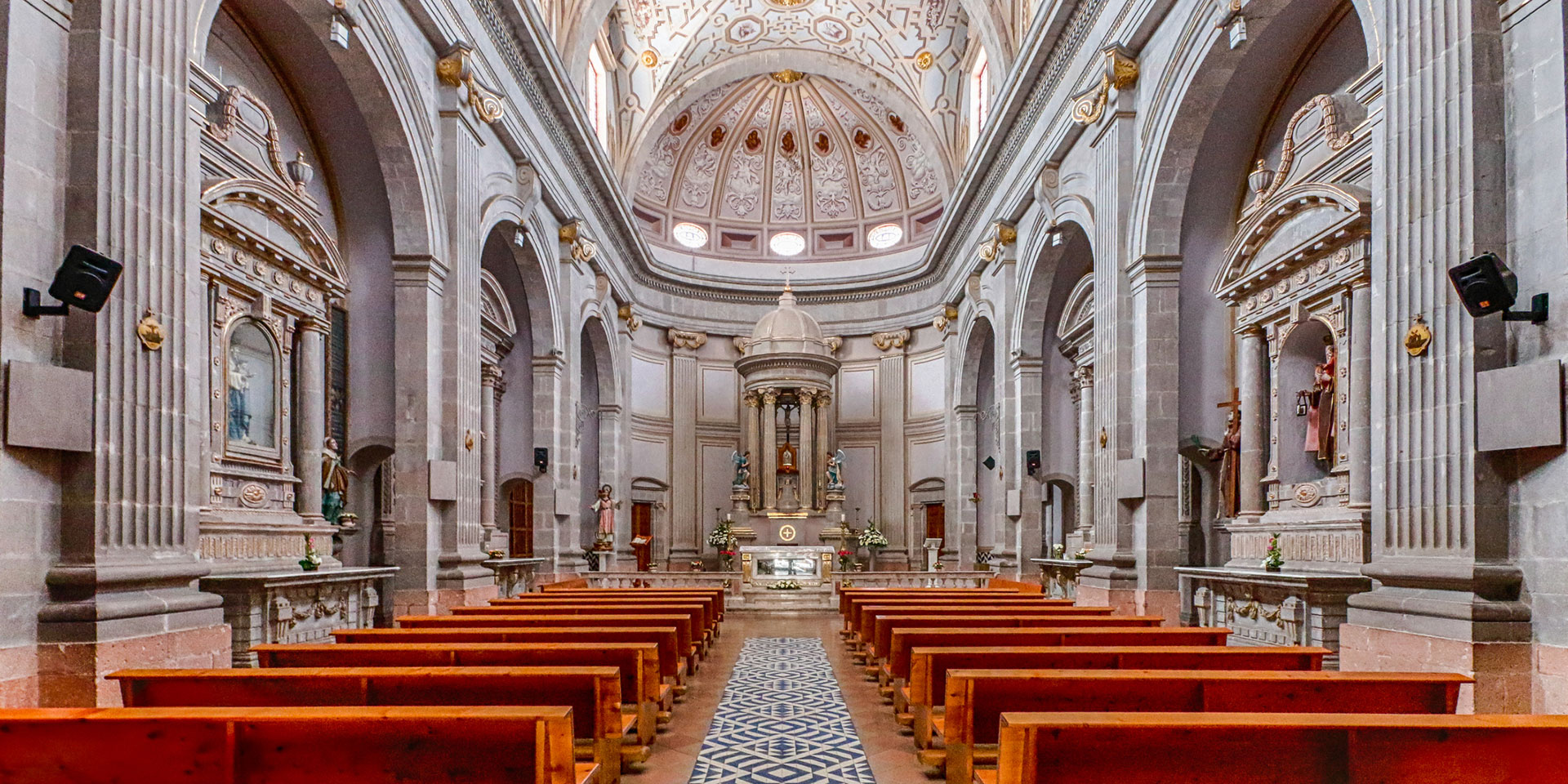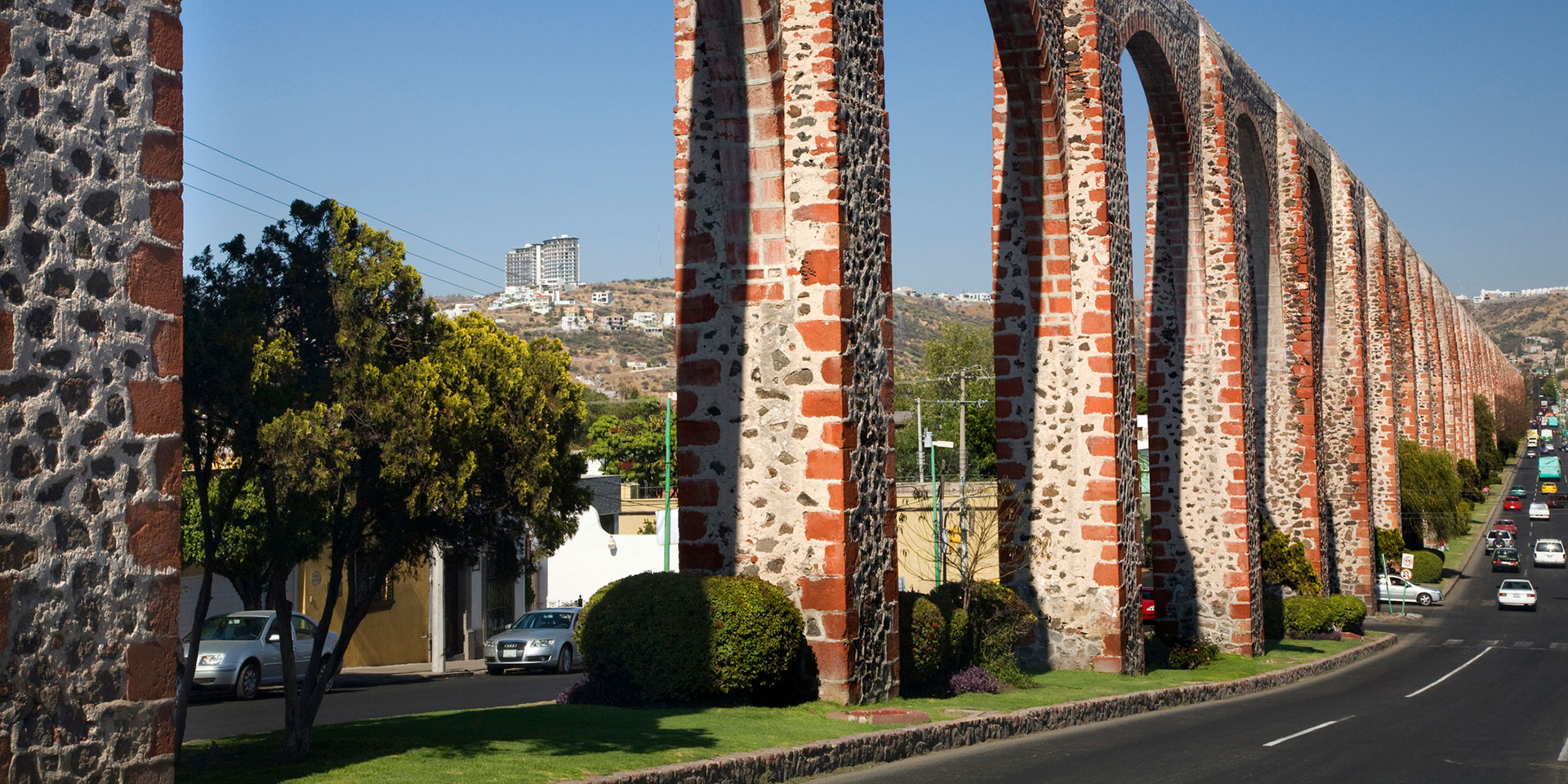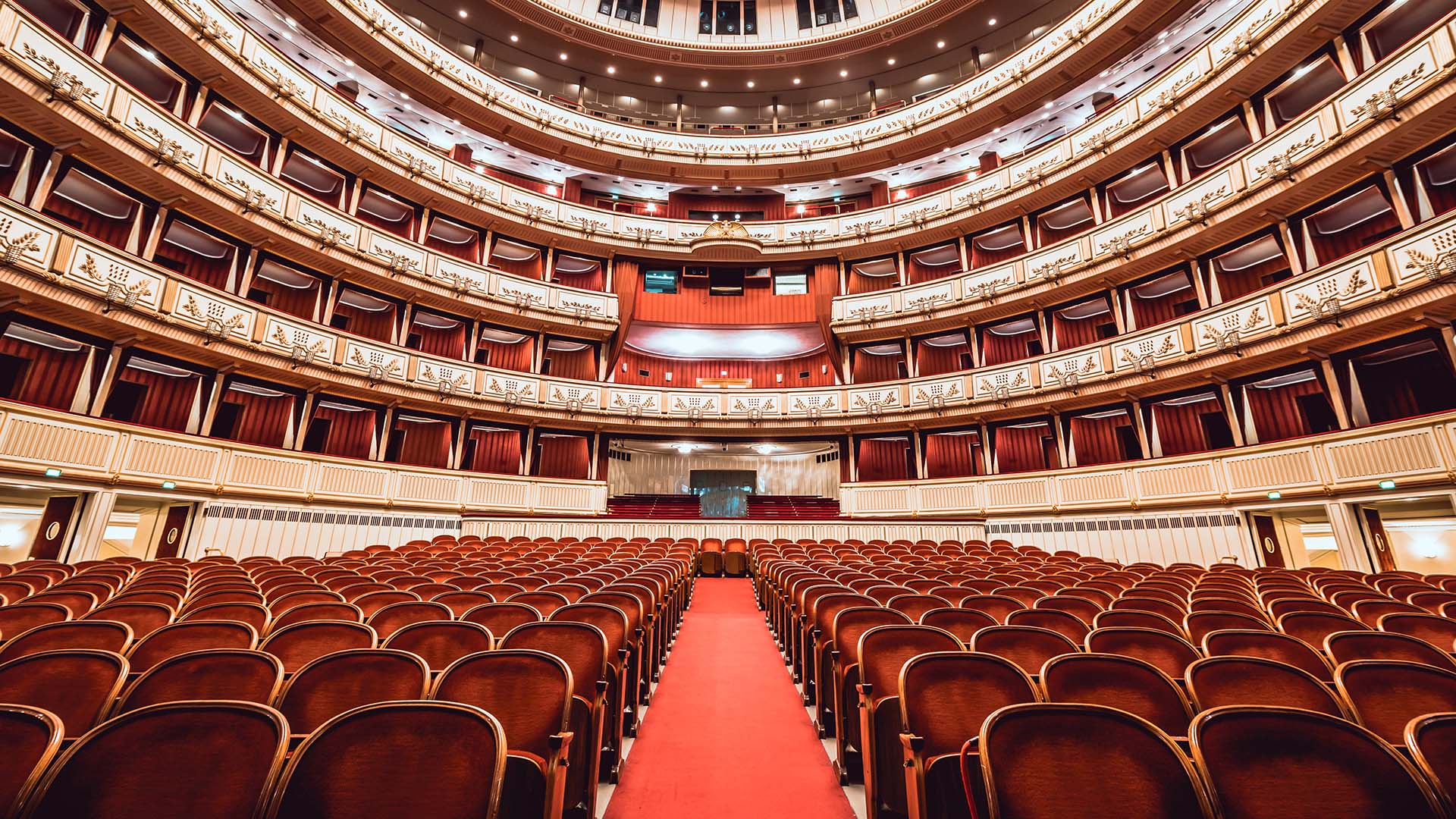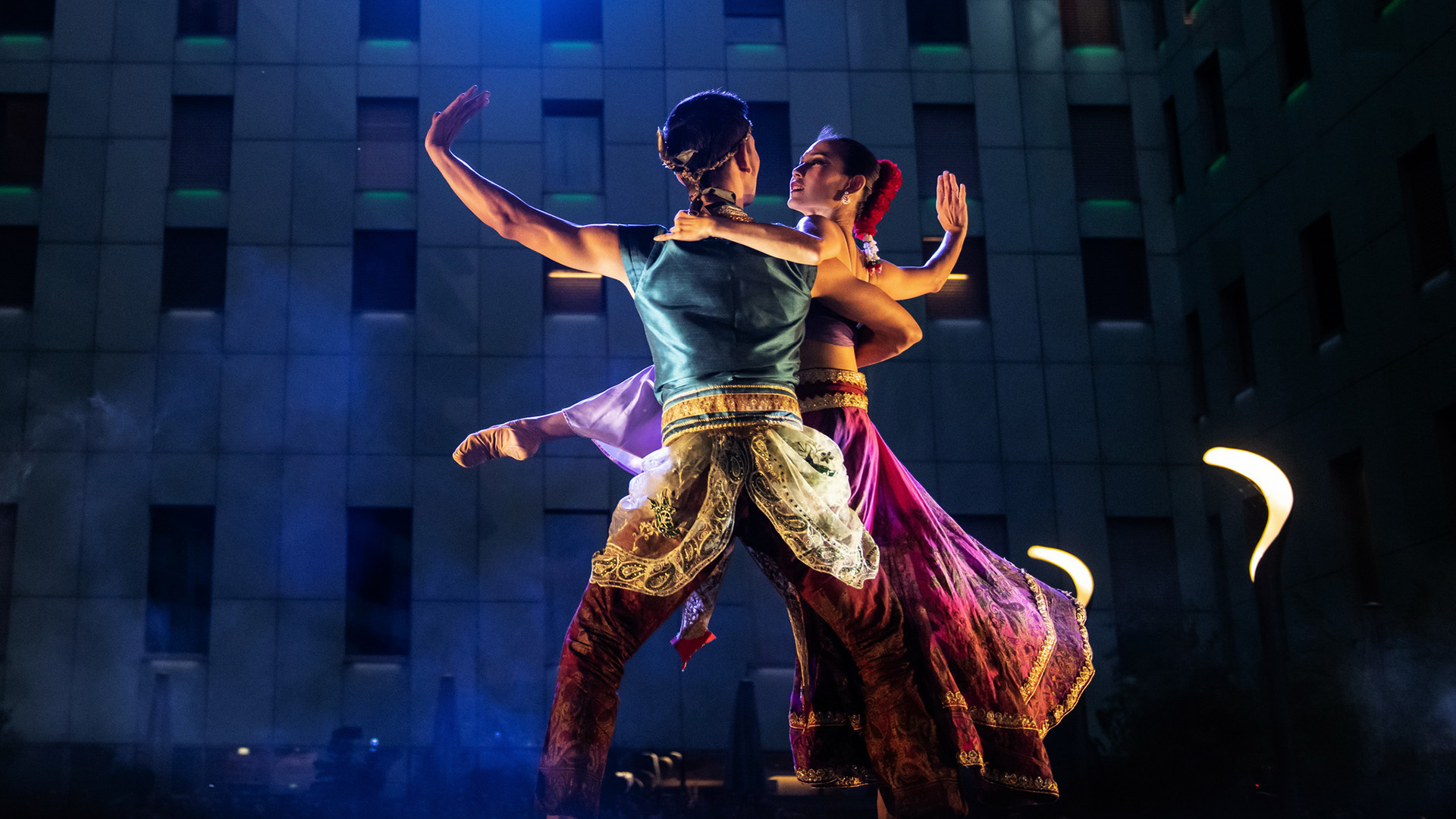
The Teresitas Temple is the greatest example of local Neo-classical style. (Photo: Getty Images)
Culture + StyleExperience Querétaro Through These 7 Architectural Gems
By Paola Quintana VeraQuerétaro is a destination that spoils architecture lovers with a combination of the most beautiful colonial-era works and intelligent modern buildings. But it’s the former that draw the most attention; it was not in vain that the old colonial city was declared a World Heritage Site by UNESCO.
What are these “must-see” landmarks? This guide will help to keep them on your radar.
Querétaro’s Aqueduct
With its 74 arches boasting a height of 75 feet and 4,200 feet in length, this aqueduct is the symbol of the city. As legend has it, this landmark was built by a Marquis at the request of his impossible love: a Capuchin nun.
It supplied water to the population for 200 years and today its circulation reaches both public and private fountains. Day or night, the aqueduct’s directional lighting is spectacular.

Temple of Santa Rosa de Viterbo
Dedicated to an Italian virgin, this temple is considered one of the greatest expressions of eighteenth century Mexican baroque architecture. The first three-dial clock built in Continental America is found at the entrance.
Inside, the five altarpieces are made of wood and coated in gold. You can visit any day of the week between 9 a.m. and 6 p.m.

Old Railway Station
This markedly English-style railway station completed its construction in 1904. Lead architect R.T. McDonald decided to utilize local materials such as grey and pink quarry, resulting in a splendid façade.
Today it houses a cultural center and the Museo del Ferrocarril (Railway Museum). Opens Wednesday thru Sunday and admission is free.
Corregidora House
Situated on the north corner of the Plaza de Armas, this edifice is the current state government headquarters. Its raised walls and multiple windows with balconies are another example of the colonial baroque style.
It took 30 years to complete construction and the conspiracies developed within its walls led to Mexico’s independence from Spain.
St. Francis’ Temple and Former Convent
This temple began construction in 1550 and was the first religious building in Querétaro—giving it a very important role in local architecture. Its style is sober baroque. Today this former convent houses the headquarters of the Museo Regional (Regional Museum).
Theater of the Republic
Designed by the architect Camilo San Germán in 1845, this theater is the site where the current Mexican constitution was promulgated. Its chamfer-style façade and the relationship between the entrance hall and auditorium was considered avant-garde for its time, as the two rooms join at a 90-degree angle.
The theater opens its doors to the public Monday thru Saturday from 10 a.m. to 2 p.m.
Teresitas Temple
The Teresitas Temple is the greatest example of the local Neo-classical style. Its quarry façade features six Ionic columns topped with a triangular pediment. Unlike baroque-style temples, it has large windows that permit the passage of natural light.
In 1867, the temple served as a prison of the Emperor Maximilian of Habsburg and today it’s the home of the Conservatorio de Música (Conservatory of Music).







